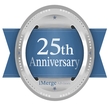A Guide to Business Evaluation Methods: How to Value a Business
Valuing a business is an essential part of buying or selling a company. There are various business evaluation methods, and each method has its advantages and disadvantages. In this article, we will provide an overview of the top methods for valuing a business, including multiples, asset-based, and discounted cash flow.
Multiples Method
The multiples method is a popular method for valuing a business. This method involves comparing the financial metrics of the target company with those of similar companies in the industry. The most commonly used multiples in this method are the price-to-earnings (P/E) ratio, price-to-sales (P/S) ratio, and enterprise value-to-EBITDA (EV/EBITDA) ratio.
The multiples method is relatively easy to use and understand, making it a popular choice for small businesses. However, it may not be suitable for companies with unique characteristics that are not reflected in the industry’s metrics.
Asset-Based Method
The asset-based method involves valuing a business based on the value of its assets, including its tangible assets (such as equipment, property, and inventory) and intangible assets (such as patents, trademarks, and goodwill).
The asset-based method is most suitable for businesses with a large number of assets, such as manufacturing or construction companies. However, it may not be suitable for companies that rely heavily on intangible assets, such as technology or service-based businesses, as it does not take into account the value of these assets.
Discounted Cash Flow Method
The discounted cash flow (DCF) method involves estimating the future cash flows of the business and discounting them to their present value using a discount rate. The DCF method is a more complex method for valuing a business, and it requires a detailed analysis of the company’s financial statements and future growth prospects.
The DCF method is suitable for businesses with a strong track record of cash flows and predictable future earnings. However, it may not be suitable for companies with uncertain or volatile cash flows, as the valuation will be less accurate.
Combination Method
Most business valuation experts recommend using a combination of methods to obtain a more accurate valuation of a business. By using multiple methods, you can identify the strengths and weaknesses of the company and arrive at a more realistic estimate of its value.
For example, you can use the multiples method to obtain a rough estimate of the company’s value and then use the asset-based method to determine the value of its assets. You can then use the DCF method to estimate the company’s future cash flows and adjust the valuation accordingly.
Conclusion
Valuing


